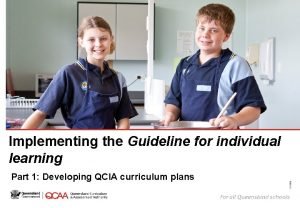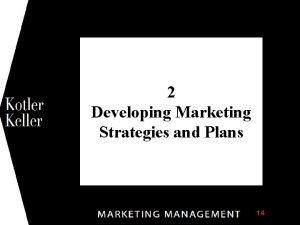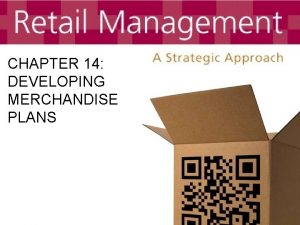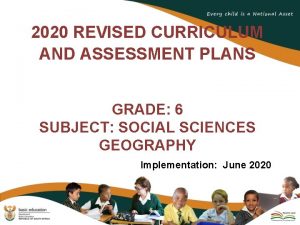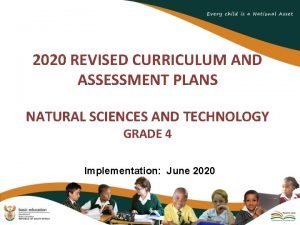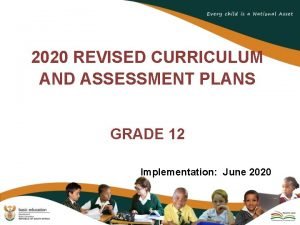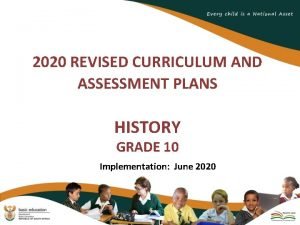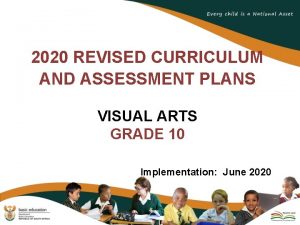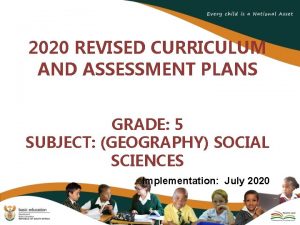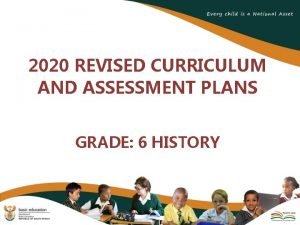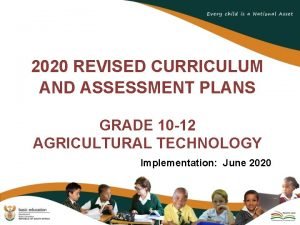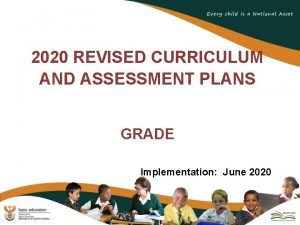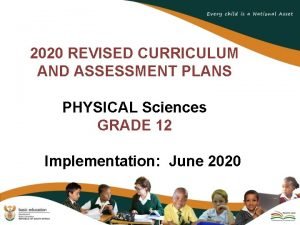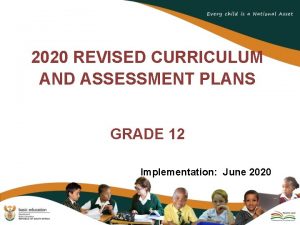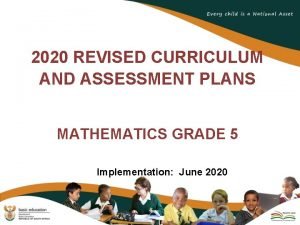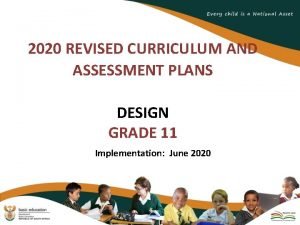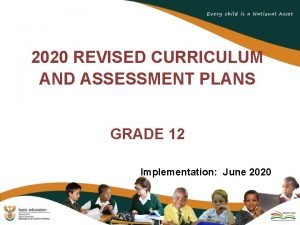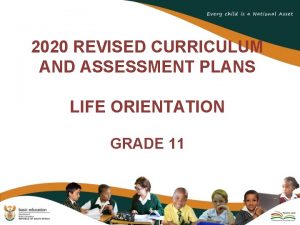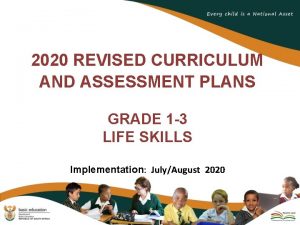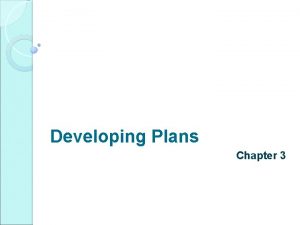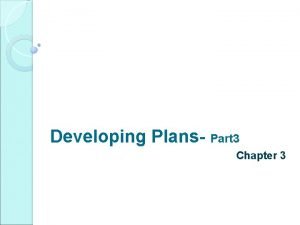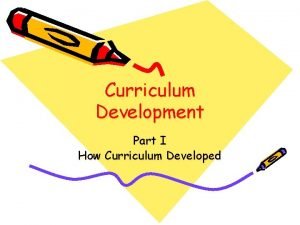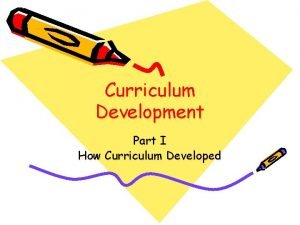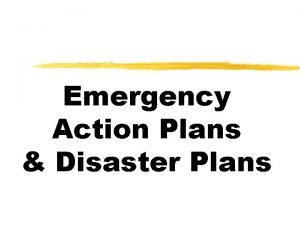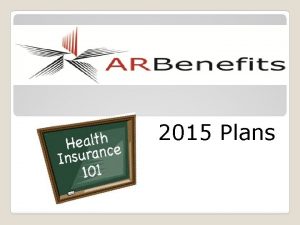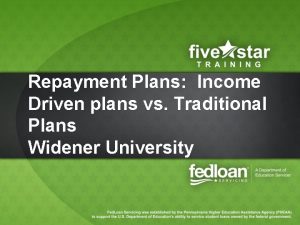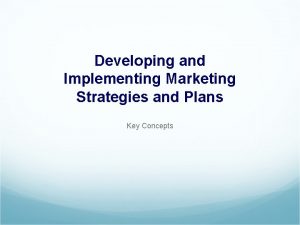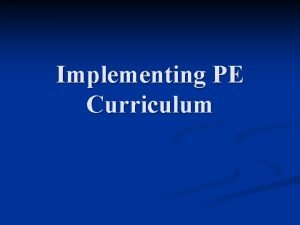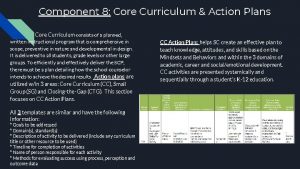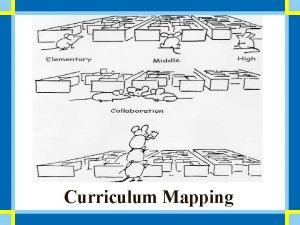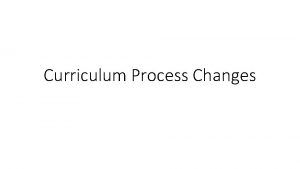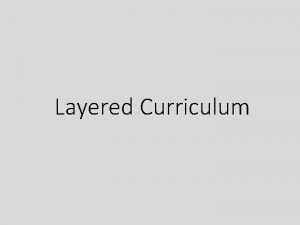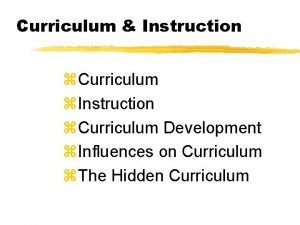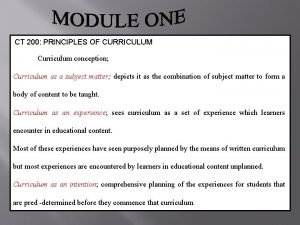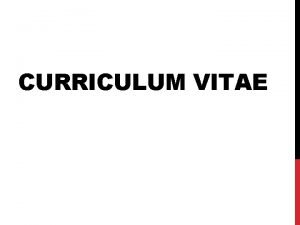Part 1 Developing QCIA curriculum plans 151086 Implementing























- Slides: 23

Part 1: Developing QCIA curriculum plans 151086 Implementing the Guideline for individual learning

Workshop goals This workshop is delivered in three parts. The learning goals for Part 1: Developing QCIA curriculum plans are to know and understand: • the curriculum framework provided by the Guideline for individual learning (GIL) • how to use the GIL to prepare individualised curriculum plans for students working towards the QCIA • the process for developing and submitting curriculum plans using the QCIA Curriculum plan builder.

Activity 1: Identifying learning goals See Participant Booklet Let’s pause and think about using the GIL to develop QCIA curriculum plans and planning for teaching, learning and assessment. What do you already KNOW? What do you WANT to learn today? What have you LEARNT?

What is the GIL? The GIL provides a curriculum, assessment and reporting framework for schools to use when developing individualised curriculum plans for senior secondary students working towards the QCIA. From 2016, all new QCIA curriculum plans will be developed using the GIL. The GIL can be accessed from: www. qcaa. qld. edu. au/senior/certificates -qualifications/qcia/curriculum

Using the GIL The GIL consists of five sections, which outline the processes for planning teaching, learning, assessment and certification: • Section 1: Curriculum Amended Nov 2015 • Section 2: Planning for teaching, learning and assessment • Section 3: Developing assessment • Section 4: Moderation • Section 5: Certification. Amended version available now!

Curriculum framework Figure 2: Curriculum structure from p. 3 of the GIL

Curriculum organisers • 5 curriculum organisers • Used to gather and record student achievement for the QCIA • Not all curriculum organisers need to be used – select only those relevant to the individual student • No changes are to be made to the curriculum organisers

Learning focuses • Identified and developed from the curriculum organiser descriptions • For each relevant curriculum organiser, select at least one learning focus • When a learning focus is broken down further, select at least one subcategory • No changes are to be made to the learning focuses

See Participant Booklet Activity 2: Purpose of each curriculum organiser Think • Read each of the curriculum organiser descriptions and learning focuses in the GIL (pp. 4– 5). Make some notes about the purpose of each curriculum organiser. Pair • What is something new or interesting you learned about the curriculum organisers and learning focuses? Share with a partner. Share • Is there anything that you will need to change about the way you currently use the curriculum organisers when developing future QCIA curriculum plans?

Learning goals • Describe the knowledge, understanding and skills of the learning focuses • Reflect a range of learning that caters for all students • For each learning focus, select at least one learning goal • No changes are to be made to the learning goals

How do you select learning goals? Consider: • the individual student, e. g. strengths, goals, interests • data that indicates the student’s current level of learning, e. g. literacy, numeracy, communication • pathways planning – SET plan – individual planning, e. g. PATH planning – conversations with families – conversations with outside agencies and therapists.

Learning goals and Statements of Achievement • Selected from the GIL – refer to Appendix 1 (p. 11) • Inform teaching and learning experiences the student will be provided • Implemented over Years 11 and 12 Learning goals Evidence • Collected from teaching and learning experiences • Demonstrates progress towards learning goals • Used to inform future teaching and learning • Records the specific knowledge, understanding and skills the student has demonstrated • Substantiated by evidence • Refer to QCIA Handbook for writing protocols Statements of Achievement

Examples: Aligning learning goals and Statements of Achievement

QCIA Eligibility form and curriculum plan From 2016, the QCIA Curriculum plan builder (CPB) replaces the QCIA Eligibility form and curriculum plan. Information about using the CPB is available at www. qcaa. qld. edu. au/senior/certificatesqualifications/qcia/curriculum

Example 1: Preparing a QCIA curriculum plan Curriculum organiser Communication and technologies (CT) Community, citizenship and the environment (CCE) Leisure and recreation (LR) Record the learning focus and the subcategory Personal and living dimensions (PLD) More than one learning focus can be selected for each curriculum organiser Vocational and transition activities (VTA) Learning focus/es Language comprehension Listening Learning goal/s Listen and respond to one- and two-step instructions. Select curriculum organises relevant to the Identify and take up opportunities to access local student’s needs Preferred leisure and recreation activities Participating in activities Performing Arts activities – dance, drama, music Health and wellbeing Understanding and managing emotions Interacting with others Identify strategies to manage and moderate emotions in increasingly familiar situations. Describe characteristics of cooperative behaviour and identify evidence of these in group activities. Everyday numeracy skills Applying concepts of time Using money community resources that support participation in artistic and cultural activities. Share dance, drama or music with peers to communicate emotions, experiences, ideas and stories. Learning goals are selected directly from Read digital and analogue clocks to the hour, half hour, the GIL quarter hour and minute. Use terminology for measuring time, e. g. ‘o’clock’, ‘half past’, ‘quarter to’, 'am' and 'pm'. Identify and use combinations of coins and notes for simple purchases. Post-school pathways Participate in different vocational and transition options, Vocational and transition such as volunteering, supported employment, options community participation, simulated work environments. Accessing local and community Engage in and reflect on support work and community resources placements Identify and access agencies that provide information, products and services that support transition to life beyond school. Skills for life beyond school Independence skills More than one learning goal can be selected for each learning focus Identify and practise strategies to complete tasks.

Example 2: Preparing a QCIA curriculum plan Record the learning focus and the subcategory Learning goals are selected directly from the GIL More than one learning focus can be selected for each curriculum organiser More than one learning goal can be selected for each learning focus

See Participant Booklet Activity 3: Preparing a QCIA curriculum plan 1. Identify a student requiring a QCIA curriculum plan. 2. Use the GIL to identify and record relevant curriculum organisers, learning focuses and learning goals, based on the student’s learning needs.

Creating and submitting QCIA curriculum plans To create and submit a QCIA curriculum plan, use the QCIA Curriculum plan builder in the School Portal. www. qcaa. qld. edu. au/schoolportal/login

Example 1: QCIA curriculum plan

Example 2: QCIA curriculum plan

Review and reflect The learning goals for Part 1 of this workshop series were to know and understand: • the curriculum framework provided by the GIL • how to use the GIL to prepare individualised curriculum plans for students working towards the QCIA • the process for developing and submitting curriculum plans through the QCIA Curriculum plan builder.

3 -2 -1 Reflect Take a moment to reflect on: • 3 things you recall from this workshop session • 2 connections or changes to your current practice of developing QCIA curriculum plans • 1 question you need answered.

Contact details Queensland Curriculum and Assessment Authority • Information about the amendments to the Guideline for individual learning — email seniorcurriculum@qcaa. qld. edu. au • Curriculum plans, moderation or certification — email qcia@qcaa. qld. edu. au
 Qcia
Qcia Retail management notes doc
Retail management notes doc The marketing plan the central instrument
The marketing plan the central instrument Developing marketing strategies and plans chapter 2
Developing marketing strategies and plans chapter 2 Developing marketing strategies and plans
Developing marketing strategies and plans Objectives of merchandise planning
Objectives of merchandise planning 2020 revised curriculum and assessment plans
2020 revised curriculum and assessment plans 2020 revised curriculum and assessment plans
2020 revised curriculum and assessment plans Revised curriculum 2020
Revised curriculum 2020 2020 revised curriculum and assessment plans
2020 revised curriculum and assessment plans 2020 revised curriculum and assessment plans grade 7
2020 revised curriculum and assessment plans grade 7 2020 revised curriculum and assessment plans
2020 revised curriculum and assessment plans 2020 revised curriculum and assessment plans
2020 revised curriculum and assessment plans 2020 revised curriculum and assessment plans grade 6
2020 revised curriculum and assessment plans grade 6 2021 revised curriculum and assessment plans grade 7
2021 revised curriculum and assessment plans grade 7 Revised programme of assessment 2020
Revised programme of assessment 2020 2020 revised curriculum and assessment plans
2020 revised curriculum and assessment plans Revised curriculum 2020
Revised curriculum 2020 2020 revised curriculum and assessment plans
2020 revised curriculum and assessment plans 2021 revised curriculum and assessment plans
2021 revised curriculum and assessment plans 2021 revised curriculum and assessment plans
2021 revised curriculum and assessment plans 2020 revised curriculum and assessment plans grade 6
2020 revised curriculum and assessment plans grade 6 2020 revised curriculum and assessment plans
2020 revised curriculum and assessment plans Revised curriculum 2020
Revised curriculum 2020
